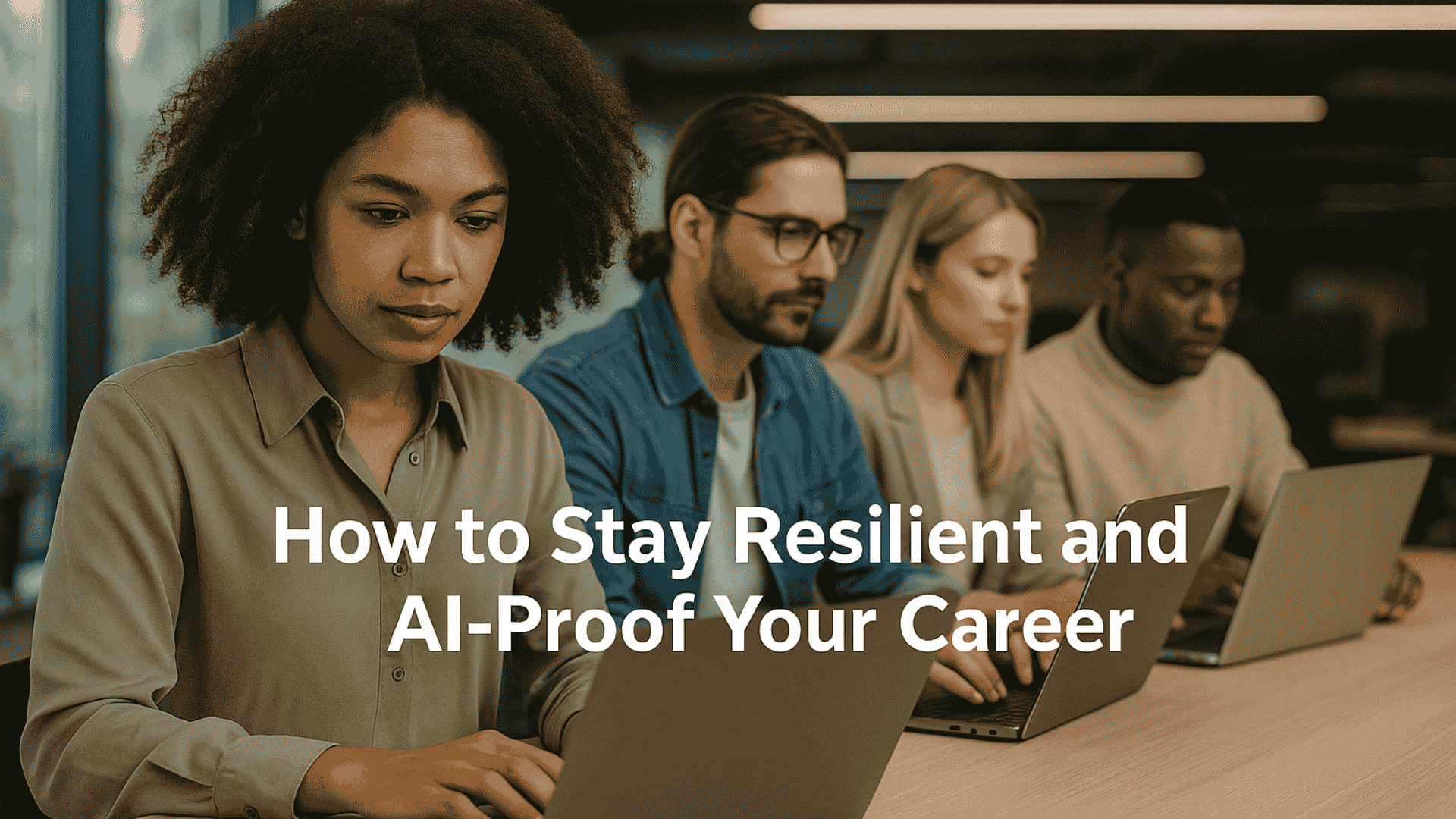
24 Jun Being Resilient and Securing Your Job in the Age of AI
In today’s workplace, a quiet revolution is underway, which is not marked by strikes or slogans, but by algorithms. Artificial Intelligence (AI) has already begun to replace tasks once thought to be the sole domain of humans. The question is no longer whether AI will change your career. It already has. The real question is: Will you change faster than it does?
AI isn’t a concept from the future anymore. It’s present in the tools we use every day from automated resume screeners and virtual assistants to generative models that can write, design, and even code. A 2023 report by Goldman Sachs estimated that around 300 million jobs could be affected globally by AI. The World Economic Forum warns that by 2027, 83 million jobs may vanish, even though 69 million new ones might be created. That’s still a net loss of 14 million roles. And let’s not forget: the jobs AI creates aren’t necessarily going to those who are losing theirs.


The Socioeconomic Risk of Uneven AI Disruption
While the rise of artificial intelligence (AI) has undoubtedly created new and exciting job roles ranging from prompt engineers to data ethicists, it has simultaneously led to the displacement of many traditional jobs, particularly in sectors like manufacturing, customer service, and logistics. The challenge lies in the fact that these sectors often lack direct or immediate pathways for reskilling into the new economy.
This mismatch between the skills being lost and the skills needed is creating a dangerous divide. Workers without access to reskilling resources or digital infrastructure are being left behind, widening existing socioeconomic inequalities. As AI continues to advance at a rapid pace, it becomes imperative to shift our focus from reactive recovery to proactive resilience-building at every level of society.
How to Build Resilience and Secure the Future of Work
Addressing job insecurity in the age of AI and automation requires more than just personal motivation; it demands a collective, systemic response. Below are four key dimensions from which resilience can and must be built:
- Policy-Level Changes
Governments have a critical role to play in creating a fairer future of work. Policies must not only promote innovation but also ensure inclusivity. Potential solutions include:
- Incentivizing Human-Centric Job Creation: Governments can offer tax breaks or subsidies to companies that create or preserve jobs that involve human skills like empathy, critical thinking, and creativity.
- Universal Basic Income (UBI): Pilots in countries like Finland and Canada have shown UBI can provide financial security, especially during transitions, allowing displaced workers to upskill without immediate income pressure.
- Labor Market Safety Nets: Strengthening unemployment benefits, job placement services, and paid reskilling programs can ease transitions.
- Educational Reforms
To prepare the next generation and support current workers, we must embed adaptability into the very foundation of our education systems.
- AI Literacy from an Early Age: Incorporating digital literacy, coding, and AI awareness into school and university curricula ensures future generations are AI-ready from the start.
- Accessible Upskilling Programs: Platforms like Coursera, edX, FutureLearn, and Khan Academy offer free or subsidized programs in areas like cybersecurity, AI, data science, and entrepreneurship.
- Public-Private Learning Initiatives: Governments can partner with tech companies to roll out subsidized credential programs tailored to emerging job markets.
- Industry Responsibility
Businesses and industries must reimagine AI as a tool for augmentation, not replacement. Responsible integration can unlock productivity without displacing livelihoods.
- Human-AI Collaboration Models: Implement AI tools that support employees in decision-making, speed, or accuracy rather than fully automate their roles.
- Employee Reskilling Initiatives: Companies like IBM and Amazon have already invested in multi-billion-dollar internal training programs. More industries must follow suit.
- Cross-Sector Alliances: Collaborations between tech companies, traditional industries, and government bodies can help shape job-ready curriculum and ethical AI frameworks.
- Individual Preparedness
While systemic changes are essential, individuals still have agency to adapt, grow, and thrive amidst change. Here’s how:
- Diversifying Your Skill Set: Explore platforms like Google Career Certificates, Coursera, and LinkedIn Learning for in-demand fields such as digital marketing, cloud computing, and data analytics.
- Staying Professionally Visible: Engage actively on platforms like LinkedIn, join relevant online communities, and attend webinars to remain connected to job opportunities.
- Building Financial Resilience: Maintain an emergency fund, reduce debts, and explore freelance or part-time income sources to create a cushion against employment shocks.
- Following Industry Signals: Regularly track shifts in hiring trends, technological advancements, and market demands to identify where your next opportunity might emerge.
Building a Future-Proof Workforce Requires Everyone
The future of work doesn’t need to be a dystopia; it can be more human-centered, inclusive, and sustainable if we make the right decisions today. But resilience cannot be the responsibility of individuals alone. Governments must legislate with foresight, educational institutions must evolve faster, industries must lead with ethics and responsibility, and individuals must remain adaptable and proactive. Together, these collective efforts can not only mitigate the impact of AI disruption but can also shape a future where innovation and inclusion go hand in hand.
Blog by Shreya Ghimire,
Research Analyst, Frost & Sullivan Institute
